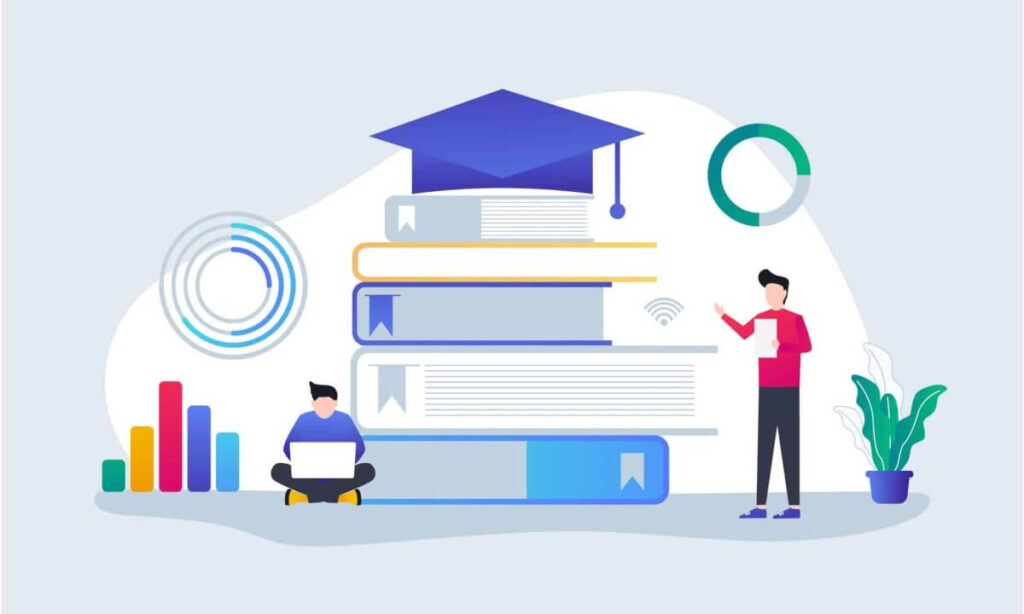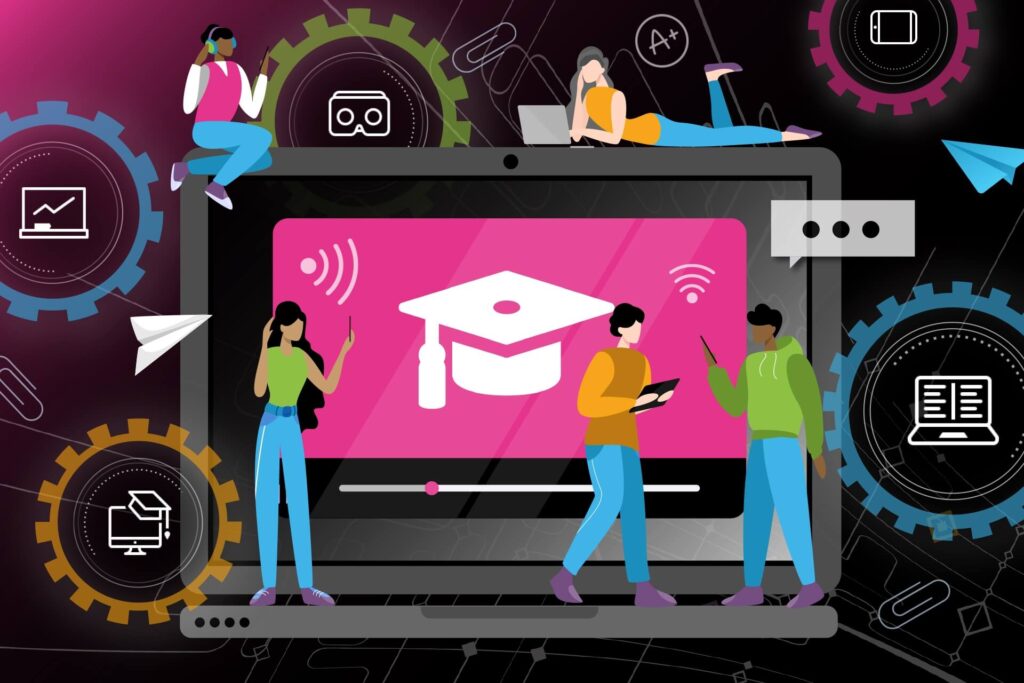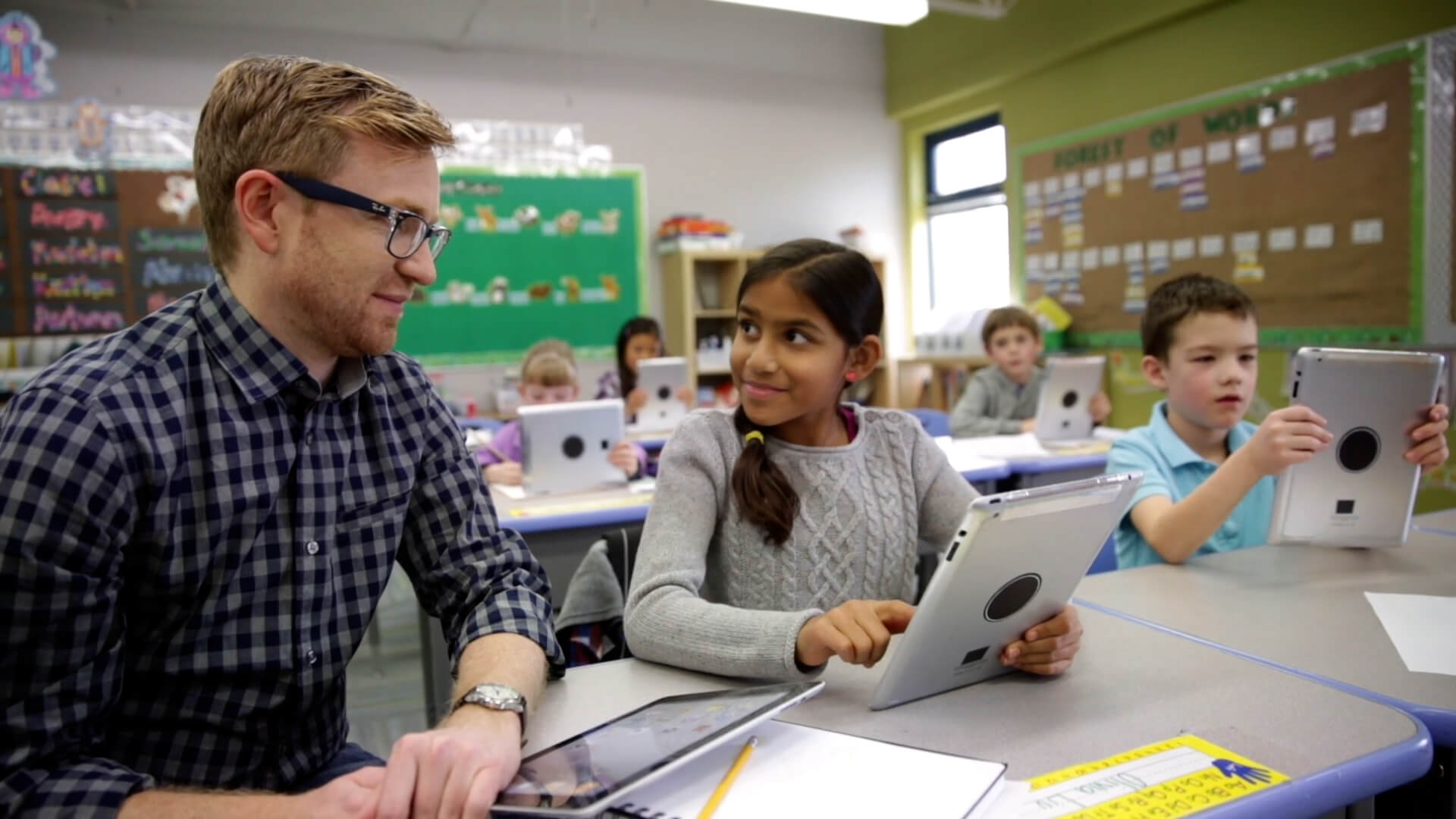Introduction
The education landscape is undergoing a seismic shift, driven by the relentless march of technology. Digital solutions have not only transformed how we teach and learn but have also redefined the role of education in preparing students for the future. From virtual classrooms to artificial intelligence (AI), today’s digital tools are making education more accessible, inclusive, and engaging than ever before. In this article, we’ll explore how these innovations are shaping the future of education and empowering learners worldwide.
The Evolution of Education Through Technology
From Chalkboards to Smartboards
The days of chalkboards and dusty erasers are fading into history, replaced by interactive smartboards that bring lessons to life. These digital tools allow educators to incorporate multimedia elements, such as videos, animations, and quizzes, directly into their teaching. As a result, classrooms are becoming more interactive and engaging for students, fostering a love for learning.
The Rise of Online Learning Platforms
Online learning platforms like Coursera, Udemy, and Khan Academy have revolutionized education by making it accessible to anyone with an internet connection. These platforms provide learners with the flexibility to study at their own pace, explore diverse subjects, and even earn certifications. With their vast course libraries, they cater to a global audience, democratizing access to knowledge.
Mobile Learning and Education Apps
Smartphones and tablets are now indispensable tools for learning. Education apps like Duolingo, Quizlet, and Google Classroom enable students to study anytime, anywhere. These apps often gamify the learning process, making it more engaging while helping users track their progress.
Digital Classrooms and Virtual Learning Environments
Virtual Reality (VR) in Education
Imagine stepping into ancient Rome during a history lesson or exploring the human brain in biology class. Virtual Reality (VR) makes this possible, offering immersive learning experiences that traditional methods can’t replicate. By simulating real-world scenarios, VR enhances understanding and retention.
Augmented Reality (AR) Tools
Augmented Reality (AR) overlays digital information onto the physical world, enriching the learning experience. Tools like Google Expeditions allow students to embark on virtual field trips or interact with 3D models of complex subjects, from molecules to machinery.
Benefits of Virtual Classrooms
Virtual classrooms offer unparalleled flexibility, enabling students to attend classes from anywhere in the world. They also reduce overhead costs for institutions and make it easier to accommodate diverse learning styles. Furthermore, these environments often include features like live polls and breakout rooms, fostering collaboration and engagement.

Artificial Intelligence in Education
Personalized Learning Paths
AI is revolutionizing personalized education by analyzing data to understand a student’s strengths and weaknesses. Platforms like DreamBox and Knewton tailor lessons to individual learning needs, ensuring that students receive the right level of challenge and support.
Automated Grading and Assessments
Educators can now rely on AI to automate grading, saving time and reducing human bias. From multiple-choice tests to essay evaluations, AI-powered tools ensure consistency and efficiency, allowing teachers to focus on providing meaningful feedback.
Chatbots and AI Tutors
AI-powered chatbots, like ChatGPT, are stepping in as virtual tutors, answering students’ questions in real time. These tools are especially useful for providing instant support, clarifying doubts, and offering additional resources for study.
Digital Solutions for Inclusivity in Education
Tools for Students with Disabilities
Digital solutions have significantly enhanced accessibility in education for students with disabilities. Assistive technologies like screen readers, voice-to-text tools, and braille display devices ensure that no learner is left behind. For instance, platforms such as Microsoft Immersive Reader and Voice Dream Reader enable students with visual impairments to access text content seamlessly. Additionally, video captioning and sign language translation tools make educational content more inclusive for hearing-impaired learners.
Bridging the Digital Divide
While digital solutions have transformed education, they’ve also highlighted the need to address the digital divide. Access to devices, reliable internet, and digital literacy remains a challenge for many communities. Governments, NGOs, and private organizations are stepping up by providing free Wi-Fi, subsidized gadgets, and digital training programs to bridge this gap, ensuring equitable access to education.
Multilingual Learning Platforms
The global nature of education today necessitates tools that cater to diverse linguistic needs. Multilingual platforms like Duolingo, BBC Languages, and Babbel empower students to learn in their native tongues or pick up new languages. By offering content in multiple languages, these platforms break down barriers and foster inclusivity in global learning environments.
Gamification in Education
Engaging Students Through Games
Gamification has emerged as a powerful tool to make learning fun and engaging. By incorporating game elements such as rewards, leaderboards, and challenges, educators can motivate students to participate actively. For example, language learning apps like Duolingo use streaks and badges to keep learners engaged and inspired to achieve their goals.
Examples of Successful Gamified Learning Tools
Several platforms have successfully integrated gamification to enhance learning experiences. Minecraft Education Edition teaches coding and critical thinking through creative building challenges. Similarly, Kahoot! allows educators to create interactive quizzes, fostering competition and collaboration among students.
Benefits of Gamification in Learning
The benefits of gamified learning are extensive. It boosts motivation, enhances retention, and encourages active participation. Moreover, gamification creates a safe space for failure, allowing students to learn from their mistakes without fear of judgment. This approach not only nurtures curiosity but also fosters resilience and problem-solving skills.

The Role of Big Data in Education
Data-Driven Decision Making
Big data is transforming education by providing valuable insights into student performance and behavior. Learning management systems (LMS) like Canvas and Blackboard collect data on attendance, test scores, and engagement, helping educators identify trends and make informed decisions to improve teaching strategies.
Predictive Analytics in Education
Predictive analytics takes big data a step further by identifying at-risk students before they fall behind. By analyzing factors like attendance, grades, and participation, institutions can intervene early with personalized support, ensuring that every learner has the chance to succeed.
Enhancing Curriculum Development
Data analysis is also playing a crucial role in curriculum development. By understanding which teaching methods are most effective, educators can refine lesson plans to better suit students’ needs. Additionally, data-driven insights help institutions design courses that align with industry demands, preparing students for future job markets.
Challenges and Ethical Considerations
Data Privacy in Education
The widespread use of digital tools raises concerns about data privacy. Protecting sensitive student information from breaches and misuse is paramount. Institutions must adopt robust security measures, such as encryption and secure data storage, to ensure compliance with regulations like GDPR and FERPA.
Addressing Screen-Time Concerns
With digital learning comes the risk of excessive screen time, which can lead to issues like eye strain and reduced physical activity. Balancing digital tools with traditional learning methods, incorporating regular breaks, and promoting offline activities can help mitigate these concerns.
Ensuring Equity in Access
While digital solutions have made education more accessible, disparities in access persist. Rural and underserved communities often face challenges such as limited internet connectivity and a lack of digital literacy. Collaborative efforts from governments, tech companies, and educators are essential to close these gaps and promote equal opportunities for all learners.
Future Trends in Digital Education
Artificial Intelligence Advancements
The future of AI in education looks promising, with innovations like adaptive learning systems and intelligent virtual assistants on the horizon. These tools will further personalize education, providing tailored support and enabling learners to achieve their full potential.
Blockchain for Credential Verification
Blockchain technology is poised to revolutionize credential verification by creating tamper-proof digital records. This innovation will simplify the process of validating degrees and certifications, making it easier for employers to verify qualifications and for students to showcase their achievements.
The Internet of Things (IoT) in Education
IoT is transforming classrooms into smart learning environments. Devices like smartboards, connected projectors, and interactive displays foster collaboration and engagement. Additionally, IoT-enabled sensors can monitor classroom conditions, optimizing the environment for better learning experiences.

Conclusion
Digital solutions are undeniably shaping the future of education, breaking barriers, and opening up new possibilities for learners and educators alike. From personalized AI-driven tools to immersive VR experiences, technology is revolutionizing how we learn and teach. While challenges like the digital divide and data privacy remain, the potential of these innovations far outweighs the hurdles. As we move forward, embracing digital transformation will be key to creating an inclusive, engaging, and effective education system that prepares learners for the challenges of tomorrow.
FAQs
1. What are the key benefits of digital education?
Digital education enhances accessibility, personalization, and engagement while making learning more flexible and inclusive.
2. How does AI enhance personalized learning?
AI analyzes data to tailor lessons to individual needs, offering customized support and helping students learn at their own pace.
3. What are the main challenges of implementing digital solutions in education?
Challenges include data privacy concerns, the digital divide, and the potential for excessive screen time.
4. Can digital solutions bridge the global education gap?
Yes, through initiatives like affordable internet, open-access platforms, and multilingual tools, digital solutions can make education more inclusive.
5. What technologies will dominate the future of education?
Emerging technologies like AI, blockchain, VR, AR, and IoT are expected to shape the future of education, enhancing learning experiences and administrative efficiency.
